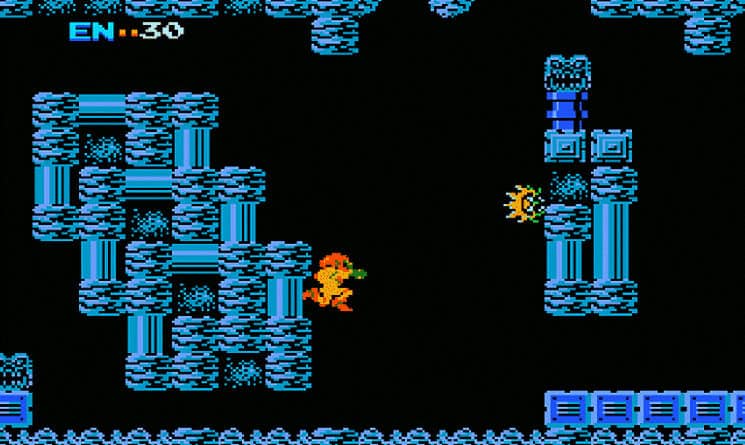“Gauntlet” (Atari, 1985)
“Metroid”(Nintendo, 1986)
Video games have never been known for their realistic portrayals of women. This isn’t up for debate. Their portrayals of men aren’t realistic either, but at least they’re varied. Boys have found 8-bit role models in vampire hunters, spies, ninjas, and even plumbers. Girls have had significantly fewer options, and in the early days of gaming, the most common career path for female characters was to be a damsel.
What’s a damsel to do if she’s not in distress? Well, nothing. In arcades and on home consoles, the women featured in games were girlfriends and princesses. They stayed home, so as not to impede the hero on his quest. If they did make it out of the castle, they were kidnapped, possessed by demons, or ransomed away — the perfect way to get a hero’s quest started. And, flying in the face of royal fashion protocol, these digital damsels would usually be sporting a new bikini when kidnapped. Isn’t that always the way?
There were glimpses of hope. By the fall of 1985, it had been three years since the release of the high heel-sporting, mascara drenched “Ms. Pac-Man.” It had been one month since “Super Mario Brothers” forced players worldwide to storm dungeon after dungeon only to find the hapless Princess Toadstool was in yet another castle. Then, in October, Atari released “Gauntlet.” A massively popular four-player game “Gauntlet” let the player choose which fantasy archetype would lead them across multi-layered dungeon mazes: a warrior, elf, wizard, or the Valkyrie. Each character had pros (the elf was quick, the wizard’s spells powerful) and cons (the warrior is strong but slow). But the most balanced character? The Valkyrie, the warrior woman of Norse mythology.
Granted, the designers made sure to bare her midriff and select a supportive piece of upper-body chainmail, but with above-average strength, speed, and spell-casting ability, the Valkyrie should have been the character who quarter wars were fought over. Then why did I always avoid playing as the Valkyrie? I’d rather sit out a game or wait for a friend to run out of quarters before I took up her sword and shield. Why? Because she’s a girl. But she’s the better character, you say! She’ll better aid in my attempts to beat the game, you insist! You’re absolutely correct. But my juvenile brain — which had no issues pretending to be an elderly wizard — could not conceive of leading the charge as a strong woman, despite the fact that almost every game asked female gamers to play as men.
This Neanderthalic approach — both from designers and gamers — is what made 1986’s “Metroid” such a surprise. What better way to convince morons like me that women deserved equal footing in the 8-bit world than the last-act twist in the first entry of Nintendo’s intergalactic bounty hunter franchise? Samus Aran leaps lava fields, slays space-pirates, and blasts holes through everything that gets in the way. With the agility of a ninja, the cunning of a spy, and the jumping skills of a plumber, Samus appeared to be the next masculine hero in Nintendo’s stable, joining the princess-saving ranks of Mario, Luigi, and Link.
But Samus didn’t save princesses. Samus blew up Mother Brain. And Samus, as we found out when a helmet was dramatically removed in the final credits, was a woman. Not a princess. Not a damsel. And she sure as hell wasn’t in distress. She was, and almost 30 years later remains, the best video game hero ever.

